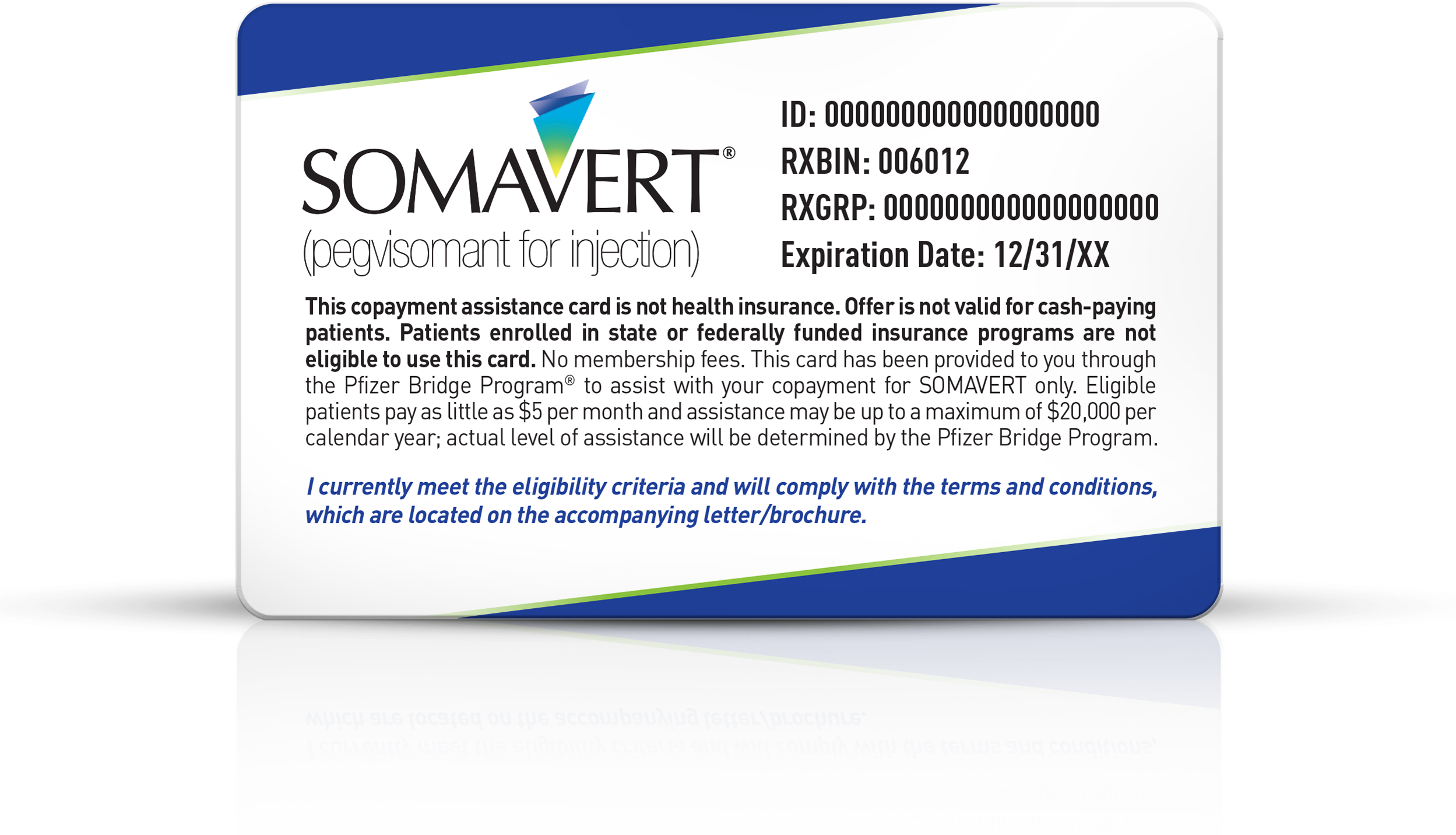Acromegaly is a rare disease, usually caused by a benign (non-cancerous) tumor, or growth, on the pituitary gland. The pituitary gland is a tiny organ in your brain. It makes many hormones, including growth hormone (GH). If you have acromegaly, the tumor on your pituitary gland causes your levels of GH to rise. High GH levels can lead to the production of too much IGF-1, which leads to signs and symptoms of acromegaly.
Acromegaly FAQs | SOMAVERT® (pegvisomant for injection) | Safety Info
Frequently asked questions about acromegaly
From diagnosis of acromegaly to treatment, your experience and your questions about acromegaly may change over time. Here you will find answers to frequently asked questions about acromegaly and IGF-1 levels.
The signs and symptoms of acromegaly show up in many ways. Some of these may include:
- Joint pain (for example, in knees or hips)
- Headaches
- Fatigue (weakness)
- Sweating
- Swelling of the hands and feet (wider shoes)
- Increased ring size
Acromegaly can be associated with many more symptoms. Speak with your doctor to learn more about its signs and symptoms.
It is caused by a pituitary tumor producing and secreting too much growth hormone (GH) in the blood. This excess GH goes to the liver and causes the liver to produce more than the normal amount of a protein called IGF-1. It is this extra IGF-1 that causes the many symptoms of acromegaly.
It is not understood why some people develop acromegaly. However, in more than 95% of people with acromegaly, a benign tumor on the pituitary is the cause of excess growth hormone (GH).
IGF-1 is a protein everyone has in their bodies. The body uses IGF-1 to promote tissue and bone growth, especially during childhood. As a person gets older, the level of IGF-1 goes down. The normal level of IGF-1 in the body depends on a person’s age and gender, so not all people have the same normal levels of IGF-1.
If your IGF-1 level is too high, this may indicate that you have acromegaly. You may also experience symptoms, such as:
- Joint pain (for example, in knees or hips)
- Headaches
- Fatigue (weakness)
- Sweating more than normal
- Swelling of the hands and feet (wider shoes)
- Increased ring size
Acromegaly can be associated with many more symptoms. Speak with your doctor to learn more about its signs and symptoms.
To find out if you have acromegaly, your doctor will conduct a history and physical examination and run blood tests. The most commonly used lab tests to diagnose acromegaly are IGF-1 and growth hormone (GH). If these levels are too high, you may need a scan called an MRI. The MRI can help find and measure the tumor that may be causing too much GH and IGF-1 in your body.
For most people with acromegaly, treatment starts by removing the benign tumor on the pituitary gland. This is done through surgery. Following surgery, a patient’s growth hormone (GH) and IGF-1 levels may drop, but not always to normal levels. These patients may then be treated with medication to control their IGF-1 levels. Radiation may be used sometimes to shrink the tumor if surgery is not an option or has not been effective.
Although acromegaly is an extremely rare disease, there are online communities where you can find other patients. You can find many of them on the Acromegaly Communities and Resources page.





